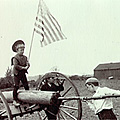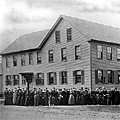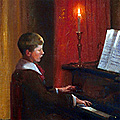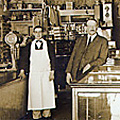
Family life in this period reveals a fundamental shift in many traditional American attitudes toward children, education, gender roles, and social status. Developments in industrial production and technology increased the ability of ordinary Americans to buy what once had been unattainable luxuries. Along with those goods came the chance to acquire customs and habits originally reserved for the wealthy. Meanwhile, these same industrial advances produced economic, political and social pressures on old habits and assumptions. More and more women worked outside the home, straining traditional beliefs about male and female roles and abilities. Adults perceived the world as a more confusing and dangerous place from which parents must shelter innocent children for as long as possible. Society no longer viewed children simply as unfinished adults; how best to educate them became a subject of considerable discussion and debate.
Dana Malone residence, Greenfield, Massachusetts, 1913
See the Digital Collection for further information.
|










